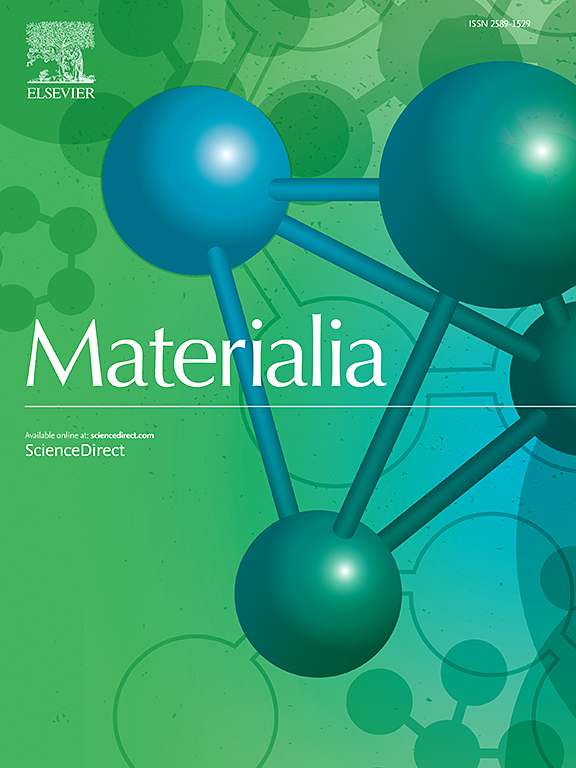Oxidation behavior of tantalum in high temperature molecular and dissociated oxygen
IF 2.9
Q2 MATERIALS SCIENCE, MULTIDISCIPLINARY
引用次数: 0
Abstract
Tantalum (Ta) was oxidized in a new resistive heating system equipped with a DC microplasma capable of heating samples to 2400 °C via Joule heating in a molecular or dissociated oxygen environment. Oxidation was conducted at 1300 °C, 1400 °C, and 1500 °C for 2.5 and 5 min in molecular or partially-dissociated 1 % O2 – balance Ar. The presence of atomic oxygen is verified through emission spectroscopy and quantified via Kapton HN erosion studies. The degree of dissociation is estimated as ∼40 %. In molecular oxygen, the thickness of the oxide grown on Ta decreased as temperature increased, suggesting the formation of a more protective scale. Gas-phase diffusion through cracks in the oxide is identified as the rate-limiting process. For oxidation in atomic oxygen at 1300 °C and 1400 °C, the highly cracked oxide provided no barrier to atomic oxygen ingress and the extent of oxidation increased ten-fold. At 1500 °C, the more protective oxide scale prevented rapid atomic oxygen ingress, and the oxide thickness is unchanged relative to that observed in molecular oxygen. Atomic oxygen exposures are effective for identifying non-protective scales.

钽在高温分子氧和解离氧中的氧化行为
钽(Ta)在一个新的电阻加热系统中氧化,该系统配备了一个直流微等离子体,能够在分子或解离氧环境中通过焦耳加热将样品加热到2400°C。在1300°C, 1400°C和1500°C下,在分子或部分解离的1% O2平衡Ar中进行2.5和5分钟的氧化。通过发射光谱验证原子氧的存在,并通过Kapton HN侵蚀研究进行量化。解离度估计为~ 40%。在分子氧中,随着温度的升高,Ta上生长的氧化物的厚度减小,表明形成了更强的保护层。通过氧化物裂纹的气相扩散被确定为限速过程。在1300°C和1400°C的原子氧中氧化,高度开裂的氧化物对原子氧的进入没有屏障,氧化程度增加了10倍。在1500°C时,更具保护性的氧化层阻止了原子氧的快速进入,并且相对于在分子氧中观察到的氧化层厚度不变。原子氧暴露对于识别非保护性鳞片是有效的。
本文章由计算机程序翻译,如有差异,请以英文原文为准。
求助全文
约1分钟内获得全文
求助全文
来源期刊

Materialia
MATERIALS SCIENCE, MULTIDISCIPLINARY-
CiteScore
6.40
自引率
2.90%
发文量
345
审稿时长
36 days
期刊介绍:
Materialia is a multidisciplinary journal of materials science and engineering that publishes original peer-reviewed research articles. Articles in Materialia advance the understanding of the relationship between processing, structure, property, and function of materials.
Materialia publishes full-length research articles, review articles, and letters (short communications). In addition to receiving direct submissions, Materialia also accepts transfers from Acta Materialia, Inc. partner journals. Materialia offers authors the choice to publish on an open access model (with author fee), or on a subscription model (with no author fee).
 求助内容:
求助内容: 应助结果提醒方式:
应助结果提醒方式:


